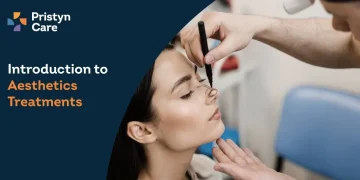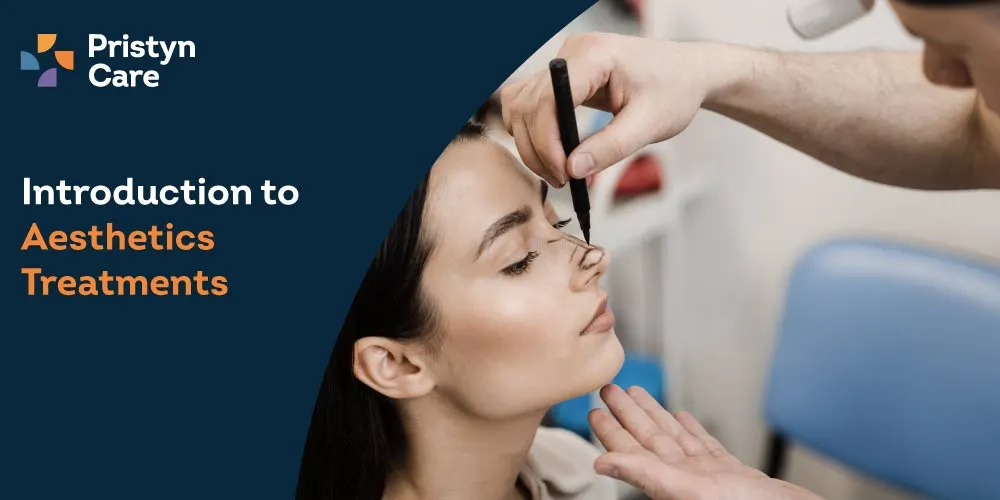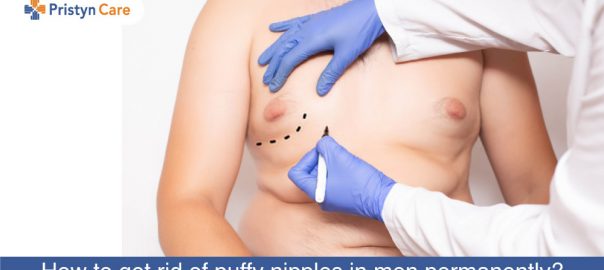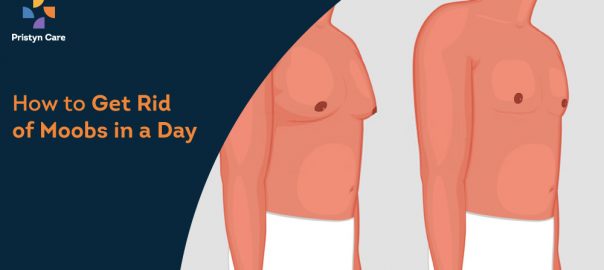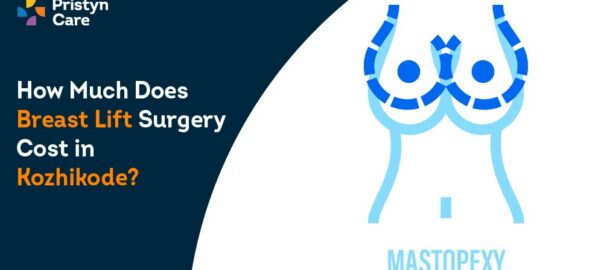![]() Views: 256
Views: 256
Introduction To Aesthetic Treatments
In essence, these figures only highlight the rising demand and acceptability for aesthetic treatments among Indians.
Dedicated Support at Every Step!
Our Doctors are available 24 hours a day, 7 days a week to help you!
Call Us0806-541-7961This blog aims to provide an insightful overview of various aesthetic treatments for healthcare professionals and individuals interested in exploring these procedures. We aim to discuss their objectives, types, how they work, and the importance of having trained professionals perform these treatments. Our goal is to educate and foster responsible practices within the sector.
Table of Contents
Understanding Aesthetic Treatments
Aesthetic treatments involve a range of surgical and non-surgical procedures that are designed with the primary goal of enhancing physical features. These treatments can address different body parts, from facial rejuvenation to body contouring.
The objectives of aesthetic treatments include:
- Enhancing physical features and aligning them with evolving beauty standards
- Boosting self-confidence and contributing to an individual's overall well-being
- Addressing specific concerns like wrinkles, fine lines, skin imperfections
Popular aesthetic treatments in India include breast reduction, breast lift, breast augmentation, gynecomastia, liposuction, mommy makeover, blepharoplasty, double chin removal, tummy tuck, nipple reconstruction, and more.
These treatments work by targeting specific areas of concern on the body. They may utilise minimally invasive procedures or advanced technologies like lasers, radiofrequency, and cryotherapy. However, it is critical that these procedures are performed by trained professionals to ensure results are both safe and effective.
The rising popularity of aesthetic treatments in India calls for healthcare professionals to stay abreast with the latest advancements in this field. By educating ourselves and promoting responsible practices, we can contribute to the ongoing dialogue in this sector ensuring patient safety and satisfaction.
No Cost EMI, Hassle-free Insurance Approval
Popular Aesthetic Treatments
Aesthetic treatments have come a long way and are now an integral part of personal care routines for many. They offer numerous ways to enhance our appearance and address various skin issues. Let us explore some popular aesthetic treatments:
Breast Lift - A breast lift, or mastopexy, raises and firms the breasts by removing excess skin and tightening the surrounding tissue. It helps restore a youthful contour to sagging or drooping breasts.
Breast Augmentation - Breast augmentation, also known as augmentation mammoplasty, involves the placement of implants to enhance the size and shape of the breasts. This procedure is popular for those seeking to improve breast volume and symmetry.
Breast Reduction - Breast reduction, or reduction mammoplasty, involves removing excess breast fat, glandular tissue, and skin to achieve a breast size proportionate to the body. It also helps alleviate discomfort associated with overly large breasts.
Gynecomastia - Gynecomastia surgery is designed to reduce the size of enlarged male breasts, often caused by hormonal imbalance or weight gain. This procedure helps men achieve a flatter, more masculine chest contour.
Liposuction - Liposuction is a cosmetic procedure that removes excess fat deposits from specific areas of the body, such as the abdomen, thighs, or arms. It helps contour and reshape areas resistant to diet and exercise.
Double Chin Removal - Double chin removal, or submental liposuction, targets and eliminates fat beneath the chin. It helps create a more defined jawline and reduces the appearance of a double chin.
Buccal Fat Removal - Buccal fat removal involves the surgical excision of fat pads from the cheeks to create a more contoured and sculpted facial appearance. This procedure is popular for those seeking to reduce cheek fullness.
Tummy Tuck - A tummy tuck, or abdominoplasty, removes excess skin and fat from the abdomen while tightening the abdominal muscles. It results in a flatter, firmer stomach and is often sought after significant weight loss or pregnancy.
Non-Surgical vs Surgical Aesthetic Treatments
When we talk about aesthetic treatments, we usually categorise them as non-surgical or surgical. Non-surgical aesthetic treatments such as chemical peels, Botox injections, laser hair removal, and dermal fillers are minimally invasive and require little to no downtime. These treatments offer subtle enhancements and are often employed to address certain concerns like wrinkles, pigmentation, or unwanted hair growth. They are less dramatic in their effects compared to surgical procedures but can be quite effective when addressing specific skin concerns.
The choice between non-surgical and surgical treatments often depends on the individual's goals, the severity of their concerns, and their willingness to undergo a more involved procedure. Many opt for non-surgical treatments as a starting point, with surgical options considered for more significant changes. The best decision always involves a thorough consultation with your doctor.
The Importance of Professional Consultation
In the world of aesthetic treatments, professional consultation acts as the cornerstone for safe and effective outcomes. Before you undergo any aesthetic procedure, be it a simple skincare routine or a complex laser aesthetic treatment, seeking advice from qualified healthcare professionals such as dermatologists, plastic surgeons, or licensed aestheticians is critical.
These experts possess the required knowledge and experience to evaluate your medical history, skin type, and aesthetic objectives. Based on this assessment, they can offer tailored advice on suitable treatments, explaining potential risks and benefits for each. This process helps ensure that you achieve the results you desire in a safe manner, while achieving long-term satisfaction with your chosen aesthetic approach.
Ethical Considerations in Aesthetic Treatments
As patients, we place immense trust in our doctors when it comes to our health and well-being. Consequently, healthcare professionals involved in aesthetic treatments must uphold the highest ethical standards.
First, they must prioritise the patient's welfare and safety above all else. This includes providing honest and clear information about treatment options and respecting the patient's autonomy during decision-making.
Second, it is equally important to ensure that procedures recommended are medically necessary. Unnecessary treatments should be avoided. Attention must also be given to underlying psychological or emotional factors that might influence the patient’s desire for aesthetic modifications.
Finally, professionals should be cautious about promoting unrealistic beauty standards, which could contribute to body image issues. By adhering to these ethical considerations, healthcare professionals can help patients make informed decisions about their aesthetic treatments, paving the way for a safe and satisfactory journey towards their desired appearance.
Potential Risks and Side Effects of Aesthetic Treatments
When considering aesthetic treatments, especially surgical procedures, it is important to be aware of the potential risks and side effects. These may include:
- Allergic Reactions: Some individuals may experience an allergic reaction to the substances used in these treatments. Symptoms can include swelling, redness, and itching.
- Infection: This can occur due to improper sterilisation procedures or poor wound care after treatment.
- Scarring: There is a risk of permanent scarring from improper injection techniques or laser treatments.
- Bruising: It is quite common for patients to experience bruising and swelling after an aesthetic treatment.
- Nerve Damage: If an injection is not done correctly, it could cause nerve damage leading to numbness or tingling.
To ensure that these risks are minimised, you should:
- Choose a Qualified Professional: Finding a practitioner with the necessary training and experience is crucial.
- Follow Post-Treatment Instructions: Adhering to recommended aftercare procedures can help reduce complications.
- Communicate With Your Practitioner: Make sure to discuss any concerns or allergies with your doctor before the treatment.
Conclusion
Opting for aesthetic treatments should be a well-informed decision. Understanding the potential risks and side effects is an integral part of this process. By choosing a qualified professional and following the recommended aftercare procedures, you can minimise potential risks and ensure that you achieve the desired results safely and effectively. Remember, being proactive about your health and well-being begins with being informed. So do your research, consult experts, and make sure you are making the best decision for yourself.
FAQs
- How can aesthetic treatments improve my appearance?
Aesthetic treatments can address a wide variety of physical concerns. This could include reducing signs of ageing like wrinkles or sagging skin, treating acne or acne scars, reducing body fat, enhancing facial features, and much more.
- What are some common types of laser aesthetic treatments?
There are several types of laser aesthetic treatments. Some examples include laser hair removal, laser skin resurfacing to reduce wrinkles or scars, and laser tattoo removal.
- Is there any downtime after undergoing aesthetic treatments?
The downtime varies depending on the type of treatment. Non-surgical procedures like Botox or dermal fillers usually require little to no downtime. However, more invasive surgical procedures may require a recovery period.
- Are aesthetic treatments painful?
Most aesthetic treatments are not painful due to the use of local anaesthetics or cooling devices. However, some discomfort might be experienced during or after the treatment.
- Are aesthetic treatments only for women?
No, aesthetic treatments are popular among both men and women. Many aesthetic clinics offer services tailored specifically to men’s needs and concerns.
- How long do the results from aesthetic treatments last?
The longevity of results varies greatly depending on the type of treatment and individual factors such as your body's response and lifestyle habits. Some treatments might require maintenance sessions for prolonged results.
- Are there any risks or side effects associated with aesthetic treatments?
Like any medical procedure, aesthetic treatments can carry some risks or side effects, including redness, swelling, bruising, or, in some rare cases, infection or scarring. Always discuss these potential risks with your doctor before the treatment.
- How do I choose a reliable aesthetic clinic for my treatment?
Ensure that your chosen clinic is registered, the doctors are qualified and experienced, and the staff is trained to carry out the procedures. You can also read reviews or ask for recommendations.
- Can I go back to my regular routine after receiving aesthetic treatments?
In most cases, you can return to your regular activities immediately or within a few days post-treatment, depending on the type of procedure. Your doctor will give you specific instructions regarding aftercare and recovery.


